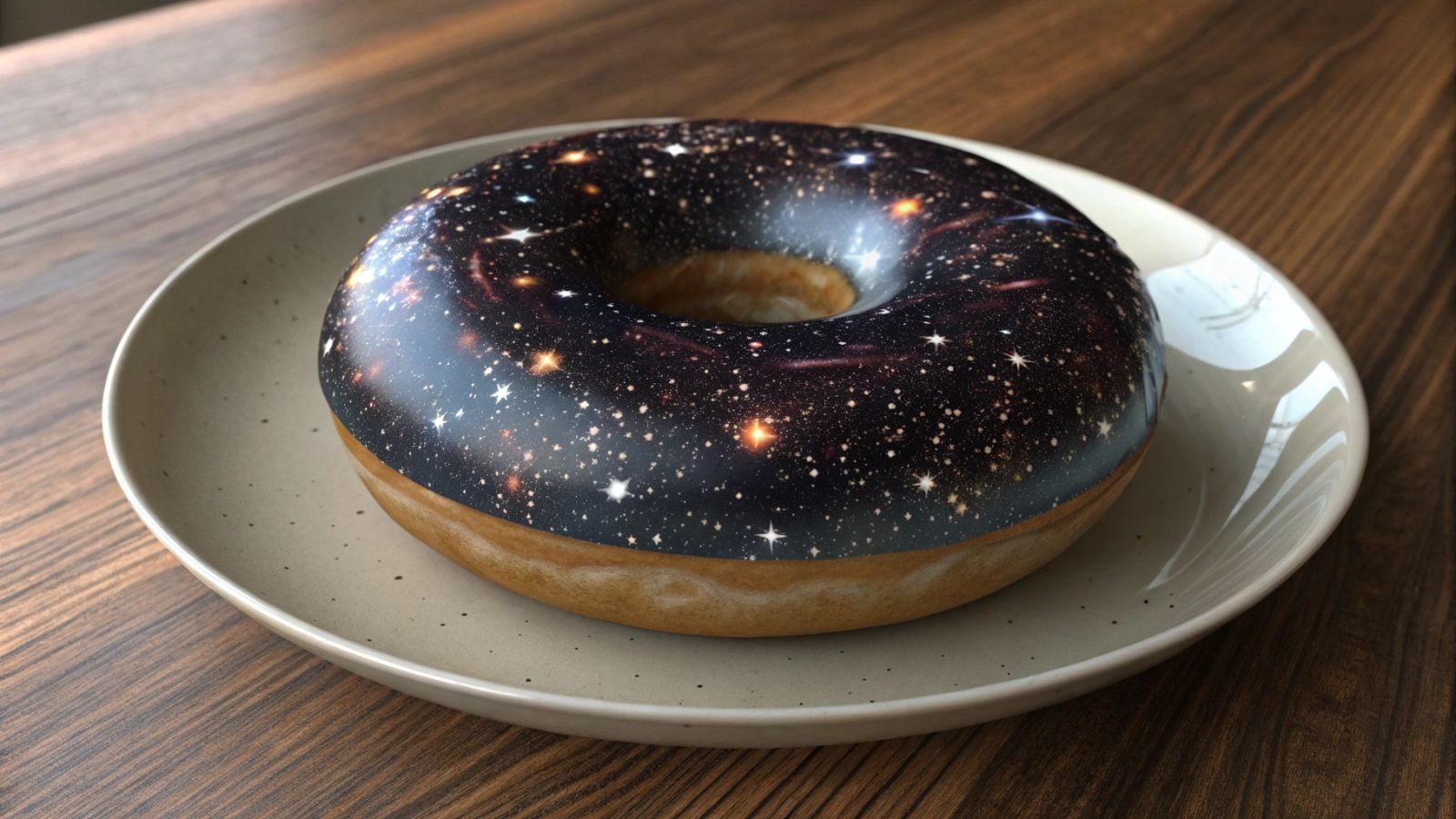Topology: the link between our breakfast and the structure of the Universe 🍩
Follow us on Google News (click on ☆)
We live on a giant sphere, a reality that goes beyond the simple notion of flatness. This sphere, with its irregularities, has a two-dimensional surface where we can move in four main directions.

But what about other possible two-dimensional spaces? The surface of a torus (the shape of our breakfast donut), for example, offers another perspective of what a 2D space could be. Mathematicians, through geometric topology, explore these spaces in all their dimensions.
Topology is not limited to the study of two-dimensional spaces. It also extends to the understanding of the Universe in three dimensions, or even more. Physicists and astronomers use this knowledge to try to determine the true shape of the space in which we live.
String theory suggests that the Universe could have many more dimensions than the four we know. This idea opens up perspectives for understanding our cosmos and finds practical applications, such as in planning robot movements.
Mathematical knots, another area of study in topology, illustrate how one space can fit into another. These concepts have applications ranging from physics to biology, and even chemistry.
Geometric topology continues to pose questions, such as the Poincaré conjecture in four dimensions or the slice-ribbon conjecture. These researches are crucial for understanding our world and solving concrete problems.
Topology, with its mysteries and complexities, is thus a valuable tool for scientists and engineers. It helps us decode the structure of the Universe and innovate in many fields.
What is geometric topology?
Geometric topology is a branch of mathematics that studies the properties of spaces that remain unchanged by continuous deformations, such as stretching or twisting, but without tearing or gluing. It allows classifying spaces according to their 'shape' and understanding how different spaces can be connected or distinguished from each other.
This discipline explores concepts such as surfaces, manifolds, and knots, seeking to understand their fundamental properties. For example, it allows distinguishing a sphere from a torus based on topological criteria.
Geometric topology has applications in many scientific fields, from theoretical physics to molecular biology. It helps model phenomena and solve practical problems, such as designing sensor networks or planning trajectories for robots.
This discipline continues to pose fundamental questions about the nature of spaces, including those of higher dimensions, and contributes to our understanding of the Universe and its mysteries.
How does string theory influence our understanding of the Universe?
String theory is a theoretical approach in physics that attempts to reconcile quantum mechanics and general relativity. It proposes that fundamental particles are not dimensionless points, but vibrating 'strings' in a multi-dimensional space-time.
This theory suggests that the Universe could have up to 10 or 11 dimensions, far beyond the four we experience daily. These additional dimensions would be compactified or curled up on themselves at a scale so small that they escape our direct perception.
String theory has profound implications for our understanding of the Universe, including the nature of gravity, the origin of the Universe, and the possibility of multiverses. It also provides a framework for exploring concepts such as supersymmetry and branes.
Despite its potential, string theory remains largely speculative, as it still lacks direct experimental evidence. However, it continues to inspire innovative research in theoretical physics and mathematics, in search of a unified theory of all physics.